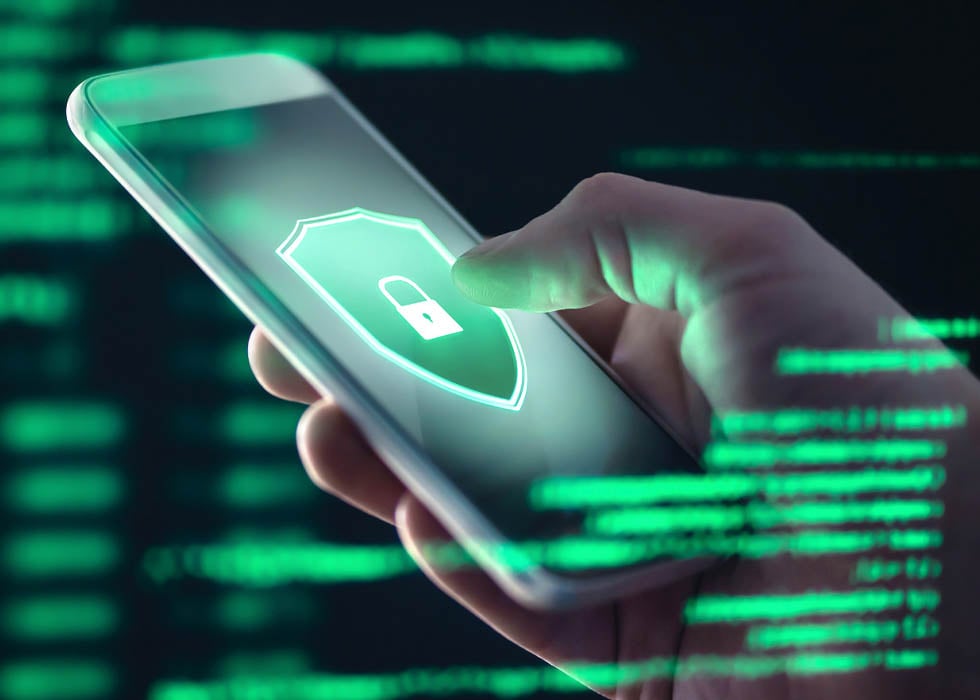
Zero Trust Security Methods for Wireless Networks: A Guide for AV/IT Professionals
With the growing number of devices connecting to the internet, it becomes increasingly difficult for organizations to track who accesses their networks. Traditional security models, which typically rely on perimeter defenses, are no longer sufficient in today’s dynamic, and often remote, environments.
Many businesses are turning to Zero Trust—a security framework that assumes no device or user can be trusted by default, whether inside or outside the network. In this article, we’ll talk more about Zero Trust and explain various Zero Trust security methods for wireless networks. Then, we’ll break down how to implement Zero Trust in an AV/IT environment with a step-by-step deployment approach.
What is Zero Trust Security?
Zero Trust security is an IT security model that requires strict identity verification for every person or device trying to access resources on a private network. Basically, a Zero Trust architecture trusts no one and nothing. No account is considered trustworthy unless verified.
Zero Trust has been embraced by the US Government and is formalized in the NIST 800-207 standard for Zero Trust architectures. Many businesses and professionals are switching to Zero Trust approaches.
With the rise of mobile devices, cloud services, remote work, and IoT devices, the network perimeter has become less clear, creating new attack surfaces. Plus, wireless connections often face challenges due to BYOD (Bring Your Own Device) culture and even AI threats.
That’s why Zero Trust has become a critical approach to cybersecurity in today’s digital environment, where organizations face evolving threats, increasingly sophisticated cyberattacks, and a shift toward remote and hybrid work.
The Basics of Zero Trust Security
Let’s dive further into the basics of Zero Trust. There are five core principles of Zero Trust security to be aware of:
- Identity - To ensure properly controlled privileged data access, organizations must employ risk-based access. Identity management involves verifying users and devices before granting access. Strong identity verification ensures that only the right people (or machines) have access to certain information.
- Devices - Zero Trust extends beyond users to the devices they use. Every device that tries to access the network must be authenticated and verified. This involves checking whether the device is compliant with security policies, such as having up-to-date antivirus software, operating system patches, and encryption. A Zero Trust security strategy includes treating all devices connected to the network as untrusted and a potential threat. Implementing zero trust security requires the ability to determine if a device is a threat and isolating compromised ones.
- Networks - With Zero Trust, the network is treated as untrusted, even if the traffic is coming from within the organization’s perimeter. A Zero Trust network is typically micro-segmented, where perimeters are defined around each of the organization’s valuable assets.
- Applications and Workloads - Organizations must treat all applications as internet-connected, routinely subject their applications to rigorous testing, and welcome external vulnerability reports. Every request to an application or service should be authenticated and authorized, ensuring that only valid users and processes can access critical systems and data. Even if an attacker gains access to a network or system, ensuring that they cannot easily access applications or workloads minimizes potential damage.
- Data - Implementing zero trust requires identifying sensitive or valuable data, mapping common data flaws, and defining access requirements based on business needs. These policies must also be enforced across an organization’s IT ecosystem.
One of the foundational concepts of Zero Trust is the principle of least privilege. It refers to giving users, devices, and applications the minimum level of access necessary to perform their tasks. The principle of least privilege ensures that access is kept to the minimum necessary, reducing potential attack vectors and limiting the impact of a security breach. But how exactly can you use Zero Trust security methods for wireless networks?
Zero Trust Security Methods for Wireless Networks
The continuous authentication of users is what sets Zero Trust apart. The most popular technique for implementing Zero Trust is multi-factor authentication (MFA), which many enterprises have already started establishing at login.
But while MFA is the most popular Zero Trust technique, it isn’t the only one. Let’s break down several Zero Trust security methods for wireless networks to help keep your data secure.
- User and Device Authentication - User and Device Authentication refers to the process of verifying both the identity of the user attempting to access a network and the security posture of the device they are using, before granting any access to resources.
- Multi-factor authentication (MFA) practices - MFA involves requiring users to provide multiple forms of identification before being granted access to a system or network. This significantly enhances security by making it harder for unauthorized users to gain access, even if one factor (like a password) is compromised.
- Role-Based Access Control (RBAC) for network devices - RBAC is a critical concept for managing and enforcing access to network devices and resources based on the roles that users or devices play within the organization. RBAC ensures that access permissions are granted based on a user's role within the organization, limiting access to only what is necessary for them to perform their job functions, and nothing more. This concept aligns with the Zero Trust principle of least privilege, which minimizes the attack surface by ensuring users and devices have access to only the resources they truly need.
- Network Segmentation - Network segmentation limits lateral movement and access to sensitive data by dividing a network into isolated segments with specific access controls and security policies. This reduces the impact of breaches by containing them within a single segment, making it harder for attackers to move freely. In a Zero Trust framework, segmentation ensures least privilege and explicit access, granting users and devices access only to the resources they need. Segregating AV systems, such as video conferencing and digital signage, into separate zones prevents vulnerabilities from compromising the main network.
- Micro-segmentation - Micro-segmentation goes a step further than network segmentation, dividing the network into very small, granular segments that are isolated from each other. Each segment can have its own access policies, firewall rules, and authentication requirements. For example, a video conferencing system may need to be isolated from the main corporate network to prevent potential exploitation of vulnerabilities in the AV equipment from affecting critical business applications or sensitive data. Similarly, a cloud storage segment may be isolated to ensure only authorized employees can access it.
- Continuous Monitoring - Zero Trust verifies user identity and privileges as well as device identity and security. Logins and connections should time out periodically once established, forcing users and devices to be continuously re-verified.
- Real-time Network Monitoring Tools - Real-time network monitoring tools are designed to continuously validate and inspect traffic, monitor user behaviors, and detect anomalies. See, for example, the Zero Trust network architectures (ZTNA) developed by Palo Alto Networks, Amazon Web Services (AWS), Cisco Networks, and Microsoft. Others include Network Traffic Analysis (NTA) tools like Darktrace or ExtraHop, Network Detection and Response (NDR) tools like Cisco Stealthwatch or Vectra AI, and Endpoint Detection and Response (EDR) tools like CrowdStrike Falcon.
- Encryption and Data Protection - In a Zero Trust Architecture, encryption and data protection are vital for securing sensitive information by ensuring that it remains protected both in transit and at rest. This involves encrypting data with identity-based controls, using key management systems to protect encryption keys, and enforcing continuous authentication through multi-factor or behavioral verification.
- End-to-End Encryption Methods for Wireless Data – End-to-end encryption (E2EE) for wireless data in a Zero Trust Architecture ensures that data is encrypted at the source, during transmission, and at the destination, preventing unauthorized access. In this model, data is encrypted using secure protocols like TLS or IPsec as it travels over wireless networks, and only the authorized recipient can decrypt it using their private key. Zero Trust continuously verifies the identity of users and devices before allowing encryption or decryption, ensuring that only trusted entities have access to the data. This protects against interception, tampering, and man-in-the-middle attacks, maintaining data integrity and confidentiality throughout the communication process.
How to Implement Zero Trust in AV/IT Environments
Implementing Zero Trust in AV/IT environments is all about tightening security by making sure nothing—whether it’s a user, device, or app—gets trusted by default, no matter where it is on the network. The idea is to enforce strict access controls, keep a constant watch on activity, and use encryption to safeguard sensitive data and systems from potential threats.
To make this work, you’ll need to assess vulnerabilities, integrate with your current tech, and gradually roll out Zero Trust across your network. Let’s break it down with a step-by-step deployment approach.
1. Assess Your Wireless Network Vulnerabilities
Before implementing Zero Trust in your AV/IT environment, it's crucial to identify and assess potential vulnerabilities in your wireless network. Wireless networks are typically more susceptible to unauthorized access and attacks compared to wired networks, making them a critical focus area.
Action Steps:
- Conduct a thorough security audit of your wireless infrastructure.
- Identify areas of weak encryption, unsecured devices, or gaps in network segmentation.
- Map out access points, devices, and traffic flows to gain full visibility of your network.
- Address vulnerabilities such as weak Wi-Fi passwords, outdated security protocols (e.g., WPA2 instead of WPA3), and lack of network segmentation.
2. Check Compatibility with Current AV/IT Systems
It's essential to evaluate whether your existing Antivirus and Information Technology systems are compatible with a Zero Trust model. Zero Trust will require tighter security controls, robust identity management, and granular access policies, so your existing AV/IT infrastructure needs to be assessed for readiness.
Action Steps:
- Review current security software, firewalls, and network devices to ensure they can support Zero Trust principles, such as identity-based access, least privilege, and micro-segmentation.
- Check that endpoint protection solutions are compatible with new authentication protocols, like Multi-Factor Authentication, and have the ability to support Zero Trust policies.
- Verify that existing systems (e.g., SIEM, IAM) can integrate with Zero Trust tools and frameworks.
- If needed, plan for upgrades or new solutions that support Zero Trust principles, such as advanced endpoint protection and network segmentation tools.
3. Integrate with Existing Technologies
Successful implementation of Zero Trust in AV/IT environments requires seamless integration with existing technologies to maintain continuity while implementing new security controls.
Action Steps:
- Identify systems (such as firewalls, VPNs, IAM, endpoint detection tools) that are already in place and assess how they can support or be enhanced to work within a Zero Trust framework.
- Focus on integrating Zero Trust technologies (e.g., Identity and Access Management (IAM), Micro-Segmentation, Network Access Control (NAC) with current security solutions, ensuring minimal disruption.
- Ensure your Security Information and Event Management (SIEM) tools can support Zero Trust logging, monitoring, and auditing for real-time tracking and compliance.
4. Leverage Existing Infrastructure for Streamlined Transitions
Rather than starting from scratch, you can leverage your current infrastructure to reduce the time, effort, and cost involved in transitioning to Zero Trust. Many modern technologies are already capable of supporting Zero Trust strategies with minor modifications.
Action Steps:
- Assess and utilize existing network segmentation, access control, and authentication systems (e.g., Active Directory, RADIUS) to build your Zero Trust architecture.
- Focus on optimizing existing tools, such as firewalls, VPNs, and endpoint management systems, to support more granular access controls.
- Use current monitoring and logging systems to track access and behavior, ensuring they can support the real-time security requirements of Zero Trust.
5. Stage a Phased Zero Trust Implementation
Instead of attempting a full-scale rollout of Zero Trust at once, a phased implementation is a more manageable and strategic approach. Start by securing the most critical areas of your environment and expand progressively.
Action Steps:
- Phase 1: Begin with the most sensitive data and systems, applying Zero Trust principles like identity verification, least privilege access, and encryption.
- Phase 2: Expand to more network segments, ensuring each new phase incorporates identity and access controls, continuous monitoring, and robust encryption for both data at rest and in transit.
- Phase 3: Gradually extend Zero Trust controls to less critical systems and user groups, ensuring that all devices, applications, and data are properly protected by the end of the implementation.
6. Track and Monitor
Once Zero Trust is deployed, continuous tracking and monitoring are essential for ensuring the model is working as intended and to detect potential threats or security lapses.
Action Steps:
- Implement real-time monitoring tools like Security Information and Event Management (SIEM) to track access requests, network traffic, and user behavior across the network.
- Set up alerts for unusual behavior, unauthorized access attempts, or violations of security policies.
- Monitor the effectiveness of implemented controls and ensure that segmentation, encryption, and access management policies are enforced consistently.
7. Make Updates as Needed
Zero Trust is an evolving strategy, so periodic updates and improvements are necessary to adapt to new threats, technological changes, and organizational needs.
Action Steps:
- Regularly review and update access policies, authentication methods, and encryption standards to stay ahead of emerging threats.
- Conduct regular security audits and penetration tests to assess vulnerabilities and refine your Zero Trust implementation.
- Stay informed about new Zero Trust tools and technologies, and consider integrating them as your infrastructure evolves.
Related Reading: AV Networking Security Best Practices
In Closing
The Zero Trust approach operates on the principle of "never trust, always verify." Access to resources is granted only after continuous authentication and validation of users, devices, and applications. Zero Trust emphasizes strict identity and access controls, the principle of least privilege, and constant monitoring to minimize the risk of breaches. By segmenting networks, enforcing granular access policies, and ensuring real-time visibility, Zero Trust strengthens security across environments, making it effective in protecting sensitive data, remote access, and modern, cloud-based systems.
Adopting a Zero Trust approach means every access request is thoroughly verified, monitored, and validated before granting access. Consider establishing a Zero Trust approach with everything infrastructure-related—routers, switches, cloud, IoT, and supply chain.
When purchasing IoT devices like smart speakers, try to look for ones incorporating a risk management framework in development. Add IoT security controls to your current risk management framework and use them with Zero Trust principles to decrease the attack surface a hacker can access.
FAQ
What are zero trust edge solutions (ZTE)?
Zero Trust Edge (ZTE) extends the Zero Trust principles by integrating network security principles with cloud-based architecture. ZTE aims to secure users, devices, and resources regardless of their location, providing unified access control and threat prevention.
Should zero trust security be used in AV/IT?
Yes, Zero Trust Security should definitely be used in AV/IT environments! As the digital landscape becomes more complex with remote work, cloud services, and the integration of various devices, traditional perimeter-based security approaches are no longer sufficient to protect against modern cyber threats. Zero Trust offers a more robust security framework that aligns perfectly with the needs of AV and IT environments, where sensitive data, devices, and systems are often at risk.
How does zero trust network access (ZTNA) work?
The core feature of ZTE is Zero Trust Network Access (ZTNA), which securely connects remote users to enterprise applications and resources, similar to a VPN. ZTNA works by securing access to resources based on the principle of "never trust, always verify." It involves segmenting the network into smaller microsegments, each with its own security policies.







